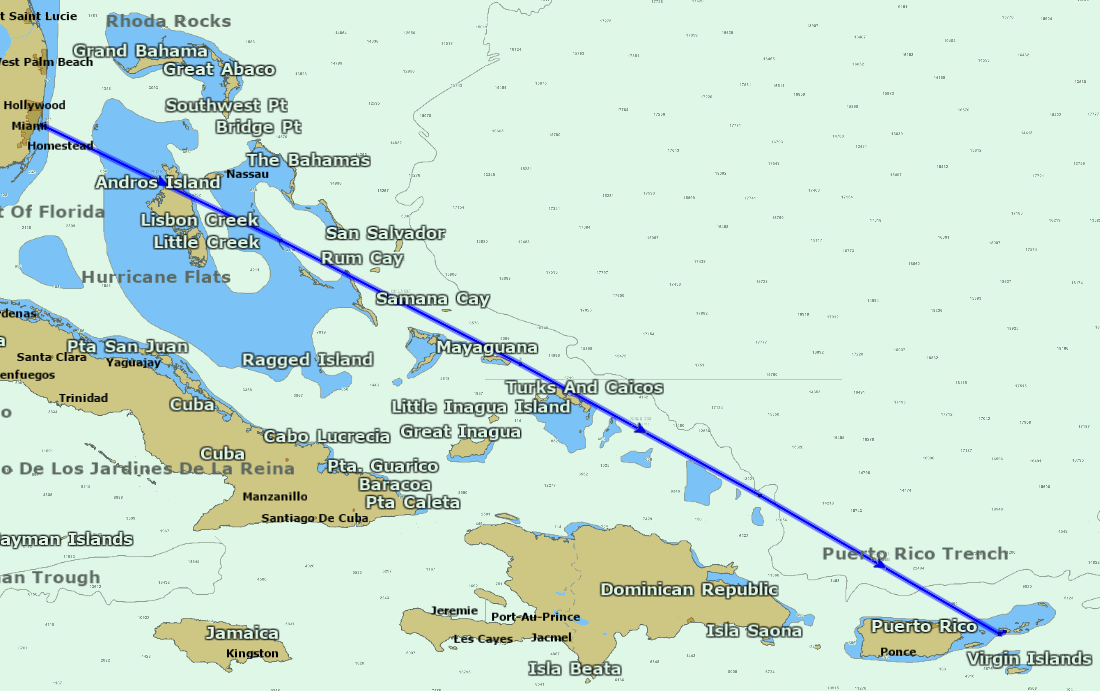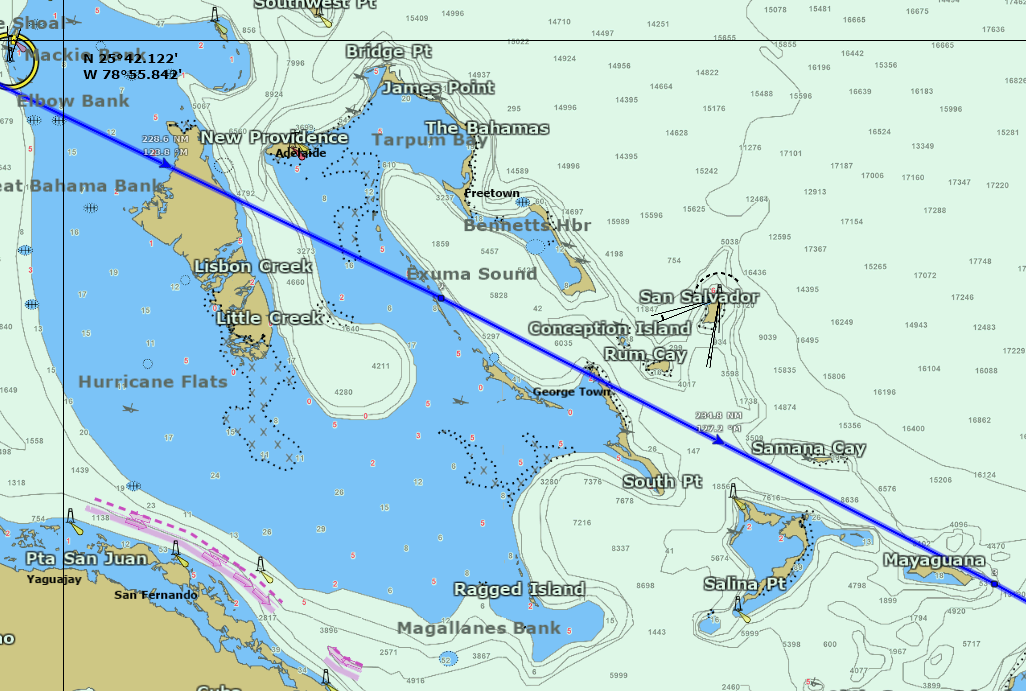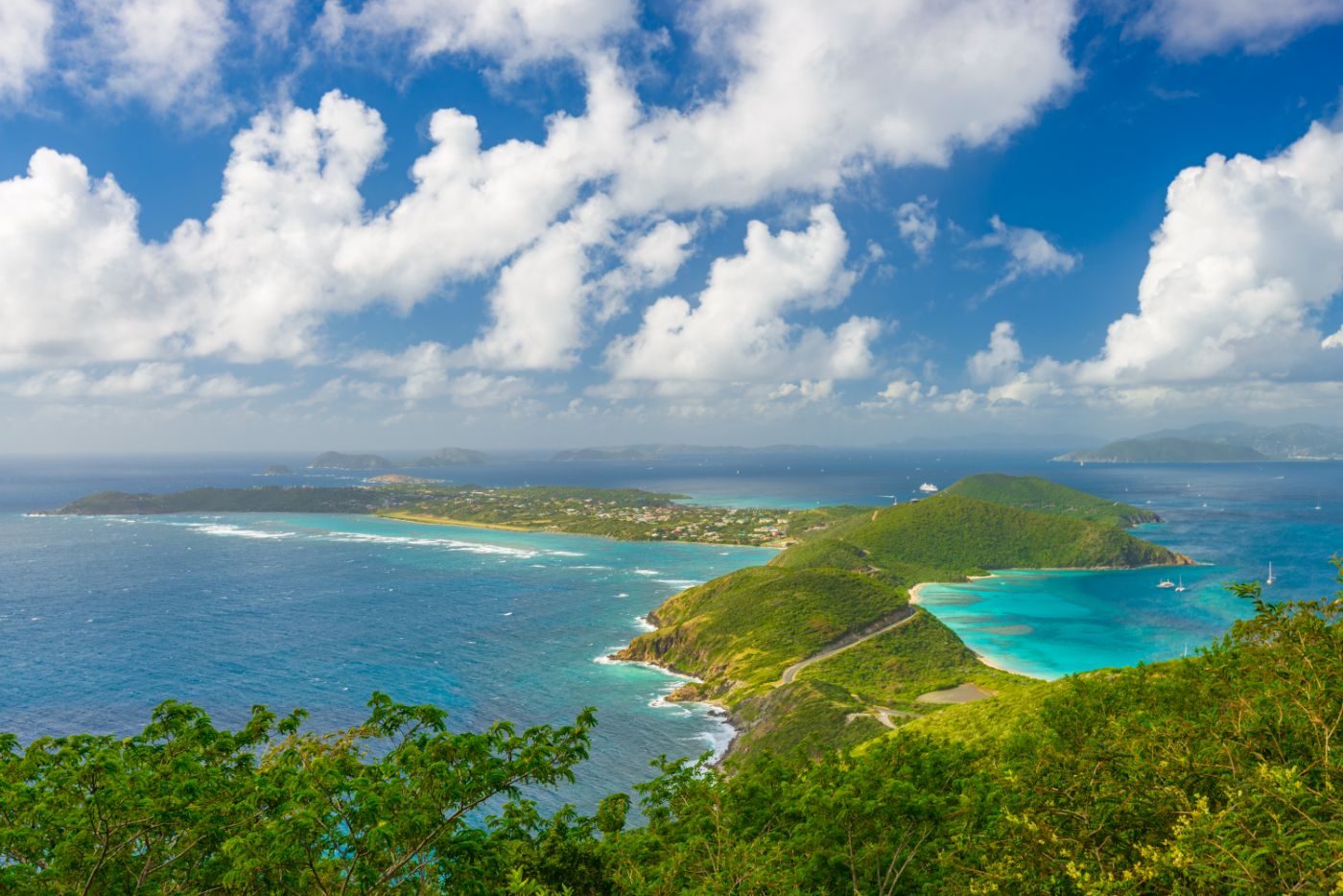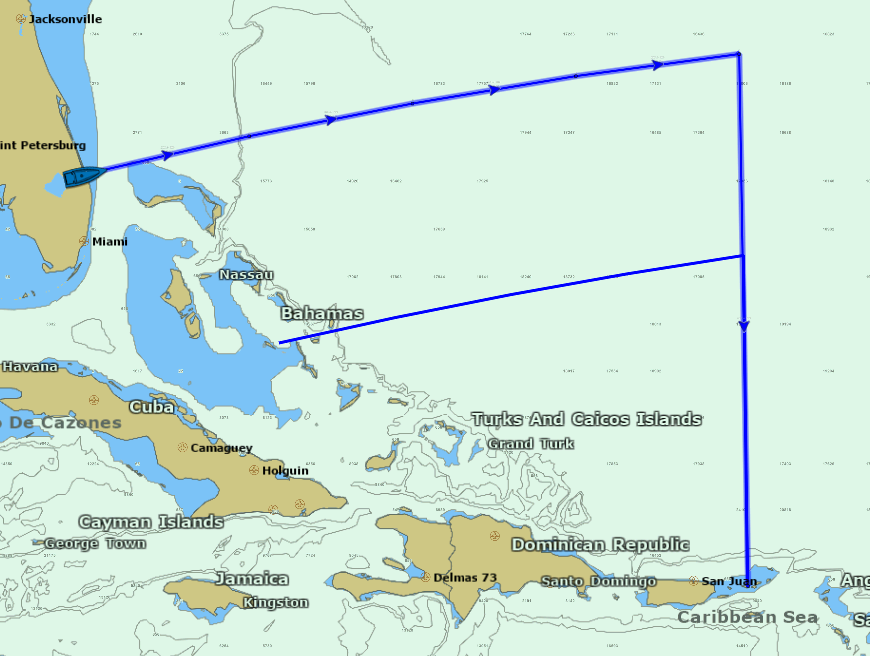On a straight-line course, the rhumb line lineage outdistance from Miami to St. Thomas is a little over 950 nautical miles ( new mexico ). But … you ca n’t sail straight from Miami to St. Thomas, because there are a set of islands in the Bahamas and the Turks and Caicos in the means. besides, once you hit the trade winds, the glide becomes upwind and much less comfortable. This is called the Thorny Path to the Caribbean for a thoroughly reason. If you could sail it true though, how hanker would it take ? At six knots, sailing from Florida to the Virgin Islands would take you about seven days. Since you can’t sail that straight line, if you’re in a hurry you can sail offshore. The nonstop route for optimal wind is closer to 1,500 nautical miles. At six knots that would take about ten and a half days.
But the answer is a piece more complicate, so we ‘ll give you some detail about why .
Route Option #1 – The Thorny Path
A lot of sailors heading to the Virgin Islands from the continental U.S. choose to leave from foster north. When we did the sail, we left from Hampton, VA. You ‘re sailing in November, and it ‘s cold for a few days, but you can get offshore promptly and sail nonstop flight to the british Virgins or the USVI across the trades, a slip of about 1,500 miles. When we did it in 2012, it took approximately nine days in our boat with an average accelerate of about seven knots .
But when you leave from far south, the Bahamas and other islands get between you and the Virgin Islands, which complicates the solid route and adds a bunch of meter and work to the trip .
Why is the Path “Thorny?”
 (Image source: TimeZero Navigator)
(Image source: TimeZero Navigator)
As you can see from the graph and route snapshot, the rhumb line line route from Miami runs Southeast, and crosses right over several large islands and complex archipelago. But you ‘re headed through The Bahamas and the Turks and Caicos – that ‘s a tropical eden, right ?
well … kind of .
It ‘s warm and cheery, but that does n’t mean you do n’t have adverse winds and currents. And it does n’t mean the waters are n’t littered with reefs, shoals, low-lying islands, and other hazards. Sheltered harbors are n’t a coarse as you ‘d like, nor are ports with marinas and supplies. It ‘s not a barren, but you ‘re not hopping from Ft. Lauderdale to Palm Beach, either .
To get a feel of the bitterness of crossing this stretch of water, take a closer expression at where this route goes through the Bahamas .
 (Image source: TimeZero Navigator)
(Image source: TimeZero Navigator)
You ‘ve got broad banks of shallows and exposed reefs butting into mile-deep waters between islands. There are gaps between islands where you ‘d be pressed to take a school draft boat, so you have to take less direct routes and pick your way through the shallows by the color of the water .
The general overture to sailing the Thorny Path is to make short hops, day sails, and overnight passages between close destinations. You do this while waiting for favorable ( or less unfavorable ) weather and winds. many people get to Georgetown and stop, because the trades get more insistent and the stops further apart. many view the slip past Georgetown as the worst stretch .
Some will sail south to the Dominican Republic into Luperón, then work their way across to slide of the Dominican Republic. This is normally an upwind slug, besides without many good safe harbors. From there you ‘d need to cross the Mona Passage to Puerto Rico, a nasty stretch of water system known for impregnable and variable currents and some of the worst conditions in the Caribbean .
The southeasterly winds and opposing currents can lead to steep, overemotional and pugnacious seas for leeward glide. even a sidereal day sail is exhausting if you spend the entire day getting beat up and tipped on your ear while bashing upwind. short hops into roughly conditions take a price on gang department of energy and on the boat – things break and wear. So it ‘s best to wait for better conditions, and even drive cruise on dead days or over nox to avoid taking a drum off shore .
While you are in the tropics and it is warm, the prevail hoist patterns and navigational requirements can turn the time you are n’t lounging on a beach into some reasonably unpleasant sailing .

How Long Does Sailing by the Thorny Path Take?
Time through the Thorny Path has less to do with gravy boat speed than it does about how you pick your stops, when you sail them, your tolerance for getting beat up on short passages, and what breaks you get in the upwind. After what you read in the death section, why would anyone want to do this ?
There are a couple of reasons. The most noteworthy is that you can make the entire trip with no in truth long offshore passages. For crews without blue water have or not comfortable being a hundred miles from country, this is a big pull. And if you have time, you can make the Thorny Path the travel and finish .
Taking enough clock the Thorny Path can be a much more pleasant have over two to three months. This gives you batch of time to wait for favorable conditions and better weather, make night passages to avoid wind instrument, and avoid the worst of the pound. If you press, you can do it in less than a calendar month but you may run into some unpleasant conditions if you push the agenda.
Read more: What is the Maritime Industry?
The I-65 Alternative
If throb upwind into chop, slop, and current between stops on little islands is n’t your thing, there is another option – head offshore. Known as “ I-65, ” this alternate road has you sail east/east-northeast until longitude 65°W, then turn south and scope towards the Virgin Islands across the trade winds .
It ‘s a pas seul on leaving from points north like we did, and if you ‘re excessively far south when you try it, it does n’t work. You ‘re sailing east before you ‘re affected by the southeasterly trades, and if you hit the trades before 65°W, you ‘ve gone besides far south. honest-to-god sailors say you ca n’t head south if butter melts sitting on the counter. The supernumerary miles to avoid sailing against the trades are worth it, and the key to what makes this quicker passage possible .
Depending on where you leave from – northerly Florida or somewhere in the Bahamas – you may sail north to avoid the trades. This is o, though you sail more miles you ‘re looking to avoid getting hammered voyage upwind for days. But it works better if you start further north .
Is I-65 Safer?
I-65 is not without hazard, since you ‘re offshore, and depending when you sail you may face good offshore storms or flush hurricanes. once you get outside hurricane season, the trade winds hit their acme seasonal worker persuasiveness. This is only a problem if you turn south besides soon .
One advantage of the thorny path is you are closer to land if you need to seek protection. There ‘s no protection on I-65. If foul weather catches up to you, there ’ s little choice but to ride it out. At least there ’ s are no down and reefs around to hit like there is on the Thorny Parth .
How Long Does it Take on I-65?
Because you ‘re sailing way offshore, I-65 is well longer than the Thorny Path on a straight credit line basis. Leaving north of the Bahamas from St. Lucie Inlet in Florida and sailing to 65°W then down to the Virgin Islands is about 1,500 nautical miles, half again the length of the barbed path. Because the Florida slide is a couple of hundred miles far west than a northerly starting point like Hampton, VA, the entire distance is pretty exchangeable because you have to get back east. Leaving from north of St. Lucie is n’t going to make the trip appreciably longer .
 (Image source: TimeZero Navigator)
(Image source: TimeZero Navigator)
A boat making six knots full on the course will take a little over ten days to make this passing. If you ‘re leaving from somewhere like Georgetown in the Bahamas, the trip is closer to 1,050 miles and will take about a week. In both cases the road distance is immanent, since you ‘re sailing east to an arbitrary longitude before making a naturally shift, so wind instrument and sailing conditions can change the distance you need to sail and how farseeing it takes .
Which is Right for You?
sol are you on “ Team Thorny Path ” or the “ I-65 Squad ? ”
The answer depends on you – your skill grade, your tolerance for discomfort and pounding your gravy boat, how much you like offshore sail, and how much time you have .
If you ‘re in a rush to get to the Virgin Islands and are finely going offshore, then I-65 sounds like the best plan for you. If you have a pair of months to explore and gunkhole in the Bahamas on the way down or you do n’t like long offshore trips, you may have the prison term to make the Thorny Path a little less barbed.
Did you find the answer to your specific question?
👍
14
